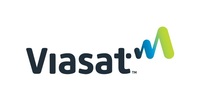The FCC announced it is adding two additional daily rounds to the incentive auction schedule, bringing the total number of rounds to six as of Wednesday, Feb. 8. The forty-minute rounds will begin at 10 a.m. ET and end at 4:40 p.m., with 20 minutes in between the first three and final three rounds (there will be a one hour and 20 minute break around lunch).
As of Round 37, auction proceeds stood at $19.41 billion.
Nokia announced its Cloud Packet Core now supports expanded capabilities including multi-access technology support for licensed wireless access from 4.XG to 5G and shared and unlicensed wireless access including WiFi, MulteFire, and LTE-based CBRS; hybrid fixed and wireless access for 4G, 4.5G, etc., with DSL/PON; IoT optimizations like a new cellular IoT serving gateway node (C-SGN); pre-integrated and modular CPC solutions; and a path for today’s IoT and MTC requirements to become the 5G Next Generation Core.
“Broadband evolution to 5G and IoT/MTC will place a diverse set of service characteristics and requirements on the network,” Sri Reddy, head of Nokia’s IP Routing and Packet Core Business Unit, observed. “These services will need to be delivered across the widest range of fixed and wireless technologies concurrently to provide a seamless service experience and support extensive personalization. The Nokia CPC provides the converged anchor point to make this possible. With its cloud-native architecture, it has the flexibility, performance, scalability, reliability and improved operations for organizations to embrace and profit from mobile broadband, IoT/MTC and coming-5G opportunities.”
Casa Systems reports it will demonstrate a “first-of-its-kind virtualized fixed mobile convergence solution that enables cable service providers to offer a full complement of robust mobile services in addition to fixed offerings to subscribers” at the CableLabs 2017 Winter Conference, which is happening this week in Orlando, Fla.
The company observes in a statement that whether activating MVNO agreements, buying licensed spectrum, or employing a lightly licensed alternative, competition is increasing between cable service providers and traditional mobile network operators. At the CableLabs meeting, Casa Systems says it will introduce a virtualized fixed mobile converged solution running on Intel Xeon processor based server platforms that allows service providers to bolster their mobile service platform and deliver a better customer experience. “This proof of concept featuring the Intel Puma 7 SoC Gateway will demonstrate a WiFi call powered by Casa’s Distributed Access Architecture (DAA) and Axyom common core software solution supporting both fixed and wireless network functions including vCCAP (fixed broadband), ePDG (WiFi), and PGW (mobile) services,” Casa’s statement reads.
The company’s ultra broadband Axyom software framework reportedly leverages fixed infrastructure for mobile services and delivers competitive WiFi-first services. It also is said to be built to deliver optimal performance and flexible deployment of core and edge access functions that free service providers from access dependencies. Based on open source technology, the Axyom solution also reportedly provides versatility to accommodate deployments on-premise, at the metro edge, or at a centralized data center. It features a suite of virtual network functions designed to help providers simplify their access networks with a single software architecture that provides security, management simplicity, and the ability to provide end users with the highest quality experience.
Huawei and Oracle officially signed a ‘Power IoT Ecosystem Partnership’ MOU recently, which will see continued cooperation around the marketing and sales of the Huawei AMI Solution with Oracle Utilities Meter Data Management (MDM), Oracle Utilities Smart Grid Gateway (SGG), and related Oracle Utilities products.
Huawei and Oracle plan to continue cooperating around customer requirements, with the parties able to make use of Huawei’s Information and Communication Technology products and solutions, in coordination with Oracle’s capability of R&D, implementation and outsourcing services in the utility industry. The collaboration will enable an end-to-end AMI solution helping power and grid companies to improve customer experience and operation efficiency, achieve energy saving, and emission reduction.
Huawei’s AMI solution can manage smart meters, communications networks and head end systems using Oracle Utilities MDM, Oracle Utilities SGG, and Oracle Utilities Customer Care and Billing (CC&B) to support MDAS and customer systems.
Filed Under: IoT • IIoT • Internet of things • Industry 4.0, Infrastructure




